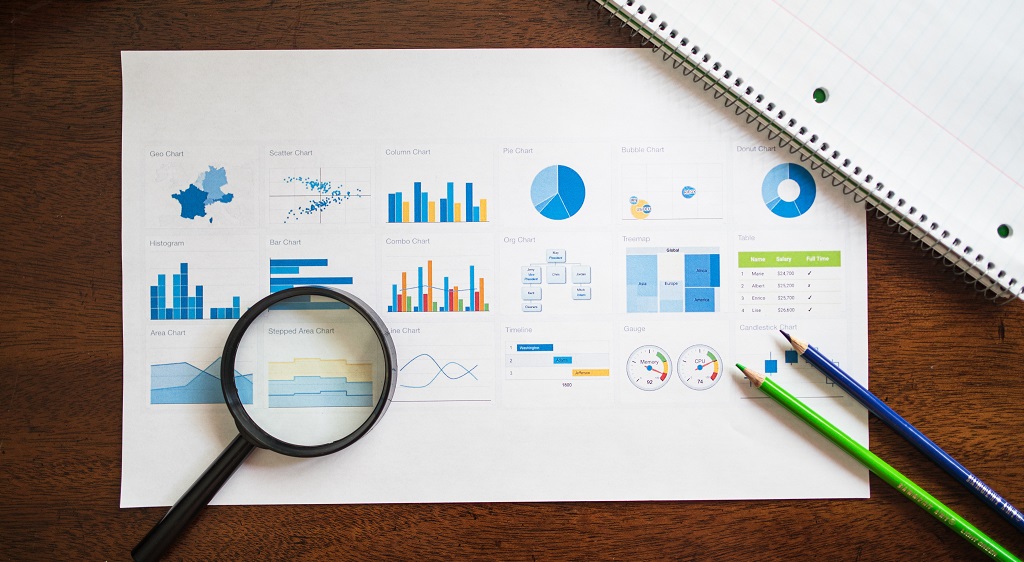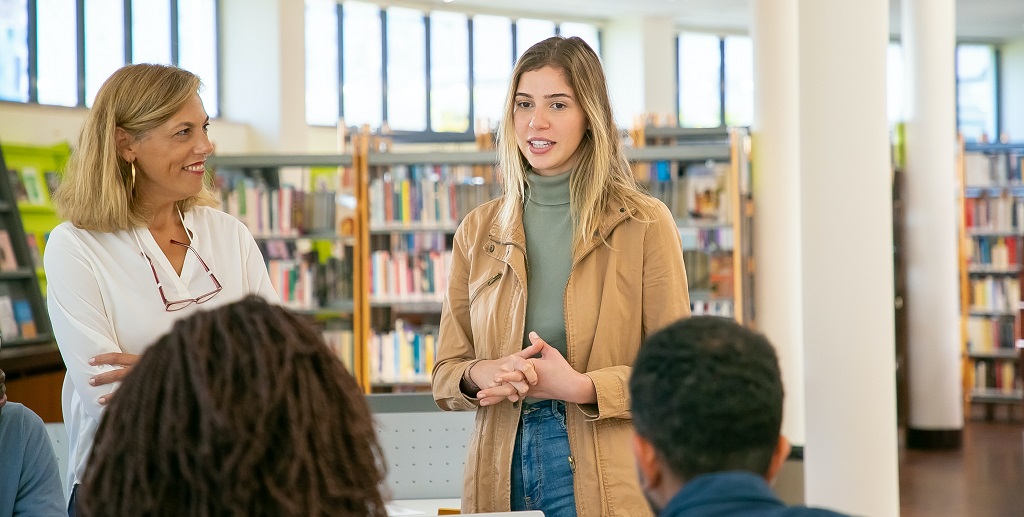There are some strengths that truly shine best in visual learners. Knowing your strengths as a visual learner can be a highly effective way to boost your productivity. It can also help you perform better in school, save you frustration, and much more.
However, some people hesitate to explore their strengths, believing it’s based on pseudoscience, costly, or time-consuming. This couldn’t be further from the truth, especially with tools like the HIGH5 test. This scientifically-backed, free online assessment takes just minutes to complete and provides valuable insights into your visual learning strengths and other key attributes. By understanding your unique strengths profile, you can unlock your full potential as a visual learner and apply this knowledge to various aspects of your life.
In this article, we will describe the strengths of this preferred learning style and how you can achieve your goal of learning through strengths.
Why Is Important To Recognize Strengths Of Visual Learners & Their Benefits
Recognizing your strengths as a visual learner is crucial for success across various fields and industries. The HIGH5 test goes beyond just identifying visual learning preferences; it provides a comprehensive strengths profile that can benefit both your professional and personal life. By understanding your unique strengths through this assessment, you can form better bonds with colleagues and loved ones, leveraging your visual learning abilities to enhance communication and collaboration. This self-awareness becomes a powerful tool for personal growth and career advancement.
Some of the more specific benefits that come along with exploring your strengths as a visual learner include:
- A boost in your confidence and positivity
- Getting a better sense of direction for your future career and setting better goals
- Meeting your goals more often and feeling more satisfied when you do
- Becoming more self-aware in your abilities and choosing jobs that match your skills
- Getting the tools to better pitch your abilities on your resume and in interviews
- Boosting your grades and becoming a more efficient learner
- Making learning more fun, engaging, and exciting for you
- Becoming more motivated to achieve more than you thought possible
- Ensuring you stay patient with yourself and take care of yourself when dealing with non-visual learning forms
- Exploring new visual learning strategies to boost your critical and creative thinking
Pro Tip From HIGH5
After identifying your strengths through the HIGH5 test, create a visual ‘Strengths in Action’ journal. For each strength, draw or collect images that represent moments when you’ve successfully applied that strength. This visual record will boost your confidence and provide inspiration for future challenges.
10 Strengths Of Visual Learners
There are many unique strengths that set visual learners apart from other types of learners. Many people do not think of their learning style as a source of strength. Being a visual learner is sometimes looked down upon by people in the education industry.

However, if you find a way to harness your learning strengths, you will receive a plethora of benefits. You may be wondering: what specific strengths do visual learners have?
Some of the top skills these individuals maintain include:
Great at organization
Being organized is necessary for virtually every field and industry. This skill can help visual learners be productive, efficient, and satisfied. Visual learners like their workplace to be visually appealing.
They want their papers to be organized and they ensure they can find everything they need to. This can set them apart from some of the other and more messy individuals in the workplace.
Being meticulous and precise
Precision is key in many organizations. For example, many surgeons, athletes, and other workers need to be precise when performing their jobs. Visual learners can spot small changes in settings easily.
They are meticulous and use their organizational skills to stay on top of things. The meticulousness also allows them to achieve more hands-on and practical tasks effectively.
Great at planning for the future
Visual learners typically have vivid dreams and precise goals for their future. They can “see their future,” knowing precisely what they want and how they can get there.
This allows individuals to better plan and meet their goals with relative ease. It can also help visual learner follow their dreams and stay passionate, even when times get tough.
Amazing at design
Visual learners make amazing fashion designers, graphic designers, architects, and similar workers. They are some of the best at visualizing items and making their visions become a physical reality. This skill is not only useful in the world of design, though.
Having strong visualization skills can help individuals approach problems in unique and innovative ways, which is helpful in almost any job.
Great memory
This learner type is not typically thought of as great with their memory. However, they are amazing at remembering visual elements. If you ask visual learners to remember a map, they are likely to do so with relative ease.
They are also great at remembering people’s faces, which saves them from being placed in awkward situations. Remembering comic books, flow charts, and other visual elements also comes with ease.
Great at tasking notes
In the classroom, notes are often necessary for success. Outside of school, notes become optional, but they can help individuals remember things effectively. This saves them time and frustration in the long run.
Thus, this seemingly unhelpful task becomes a great source of efficiency and productivity for visual learners further down their careers. Many people with this mode of learning can make notes exciting with drawings and diagrams.
They can concentrate well
Being focused and staying on task is a struggle for many individuals. It can cause some kids, and even adults, to misunderstand a list of directions, which leads to poor outcomes for their job. However, visually oriented learners are great at concentrating.
They not only know and appreciate the importance of paying attention, but it is second nature for them to focus on the visual movement and presentations their teachers give them. The same is true in meetings.
Neat handwriting
Being focused and staying on task is a struggle for many individuals. It can cause some kids, and even adults, to misunderstand a list of directions, which leads to poor outcomes for their job. However, visually oriented learners are great at concentrating.
They not only know and appreciate the importance of paying attention, but it is second nature for them to focus on the visual movement and presentations their teachers give them. The same is true in meetings.
Creative
Visual learners tend to be creative. Many of the study tools they are given at school are suited for other learning styles. So, they use their creativity to make unique study tools suited to them. It is no wonder why many of the great artists of the century have been visual learners.
Some of these individuals aquifer praise and promotions as a result of their creative problem-solving. It also gives them a competitive advantage in the job field.
Can simply complex ideas
Many of the best teachers are visual learners themselves. They know how to display content in an engaging and interesting manner. Being a visual learner means breaking down even complex ideas into manageable and easily remembered points.
This can also help visual learners while they are studying, thus allowing them to acquire higher grades and achieve more than they thought possible.
How To Identify & Master Strengths Of Visual Learners
Now that you’re aware of the incredible strengths visual learners possess, the next step is to identify and master your own unique strengths. While there are numerous ways to do this, the HIGH5 test stands out as a comprehensive and efficient method. This strengths assessment not only pinpoints your visual learning-related strengths but also uncovers other key attributes that complement your learning style. By taking the HIGH5 test, you’ll gain a holistic understanding of your strengths profile, allowing you to leverage your visual learning abilities more effectively in various aspects of your life.
Contrary to what you may think, finding your own strengths does not have to be costly or timely. In fact, there are great resources available online. One such resource is the HIGH5 test. HIGH5 is an online strengths assessment that will not only tell you your visual learning-related strengths but other strengths, too.

It will help you uncover many hidden elements of your personality. This assessment is quick, as it can be completed within a single sitting. The questions are straightforward, so anyone can discover their strengths easily.
And, best of all, HIGH5 is provided free of charge. Alternatively, you could do some strength-related self-reflection. To do this, think of the previous times you struggled with learning something.
What strategies let you learn those topics? Why did you succeed in that class? If you notice a pattern, you have probably spotted one of your strengths. This will take more time and effort than the simple online assessment, though.
Pro Tip From HIGH5
Once you’ve taken the HIGH5 test, create a visual ‘Strengths Development Plan’. Use a mind map or infographic to outline how you’ll apply each of your top strengths in different areas of your life. This visual approach will help you stay focused on developing your strengths and track your progress over time.
How To Improve Visual Strengths
Once you know your strengths, it is time to start building upon them. Try experimenting with the environment you place yourself in. Your strengths will naturally shine better in certain settings when compared to others.
For example, if you know having loud noises in your study room distracts you from making flashcards, ensure you find a quiet place to study before beginning any work.
In addition to this, you can try experimenting with different types of visualization tools. If you know you don’t do as well when you use flashcards, try using a different sort of chart.
You could make lots of pictures with your notes, too. To truly make the most of your strengths, do not be afraid to ask others for help. Many teachers and bosses use presentation tools that aren’t well suited for visual learners.
This is especially true if you work online. So, if you work with your teacher and boss to find visual tools, you can improve your strengths and achieve more too.
Pro Tip From HIGH5
Create a ‘Visual Strength Showcase’ for each of your HIGH5 strengths. Use platforms like Pinterest or Instagram to curate a collection of images, infographics, and videos that demonstrate how you’ve applied your strengths in various situations. This showcase can serve as a powerful tool for self-reflection and can even be shared with potential employers or colleagues to highlight your unique abilities.
How To Highlight Visual Strengths In Resume & Job Interview
Once you know your strengths, it is time to start building upon them. Try experimenting with the environment you place yourself in. Your strengths will naturally shine better in certain settings when compared to others.
For example, if you know having loud noises in your study room distracts you from making flashcards, ensure you find a quiet place to study before beginning any work.
In addition to this, you can try experimenting with different types of visualization tools. If you know you don’t do as well when you use flashcards, try using a different sort of chart.
You could make lots of pictures with your notes, too. To truly make the most of your strengths, do not be afraid to ask others for help. Many teachers and bosses use presentation tools that aren’t well suited for visual learners.
This is especially true if you work online. So, if you work with your teacher and boss to find visual tools, you can improve your strengths and achieve more too.
Pro Tip From HIGH5
After taking the HIGH5 test, create a visual ‘Strengths Portfolio’ to complement your resume. Use infographics, charts, or even a short video to showcase how your top strengths align with the job requirements. This visual representation will make your application stand out and demonstrate your ability to communicate complex information visually – a valuable skill in many professions.
5 Weaknesses Of Visual Learners
As we have previously mentioned, visual learners possess a multitude of unique skills. They are great organizers, fantastic at design, can remember visual elements well, and so much more.
These abilities help them succeed in the classroom, workplace, and beyond. However, as with any group of people, visually-oriented learners also have some weaknesses.
These weak abilities include:
- Not very talkative
- May not focus under certain circumstances
- Not great at following verbal instructions
- Difficulty reading
- Struggle with dexterity and muscle memory
Strengths of Visual Learners FAQs
What are 3 tips for visual learners?
Visual learners have many key skills that allow them to succeed at school, work, and beyond. However, there is always room for improvement, regardless of what your learning type is. One way to become a better visual learner is by ensuring you always have a visual aid with you when reading, writing, and performing scholarly activities.
In addition, you should also ensure you choose an environment that positively stimulates you. Ensure there are not too many visual distractions and that if you have a choice, you choose professors that are known for their visual engagement. Finally, experiment with multiple visual learning techniques, like flashcards, charts, drawings, and more
What challenges do visual learners have?
Visual learners have the ability to become extremely successful if they know how to harness their strengths. However, as with anyone, they also have their unique set of weaknesses and challenges.
For one, many materials made in schools and in the workplace are not suited for visual learners. They have to spend extra time making visual aids to succeed.
Additionally, they may not be the best at following written or said directions, making themselves and others frustrated. Finally, visual learners may also get distracted when their teacher or the presenter is not visually engaging. There are constant visual distractions competing with the presenter, making focusing challenging at times.
What does a visual learner need?
Visual learners need a teacher who presents in a visually engaging format. She or he should use charts, diagrams, pictures, and other visual elements often and consistently.
The teacher should also allow students to use flashcards and doodle in their notes if it helps them. In the workplace, a similar attitude is necessary for a visual learner to flourish.
The boss should allow visual learners to create visual aids for them to better understand the content they are learning or creating. To teach something, they should include diagrams. Allow the visual learner to take pictures and use many diagrams in their presentations, too.








